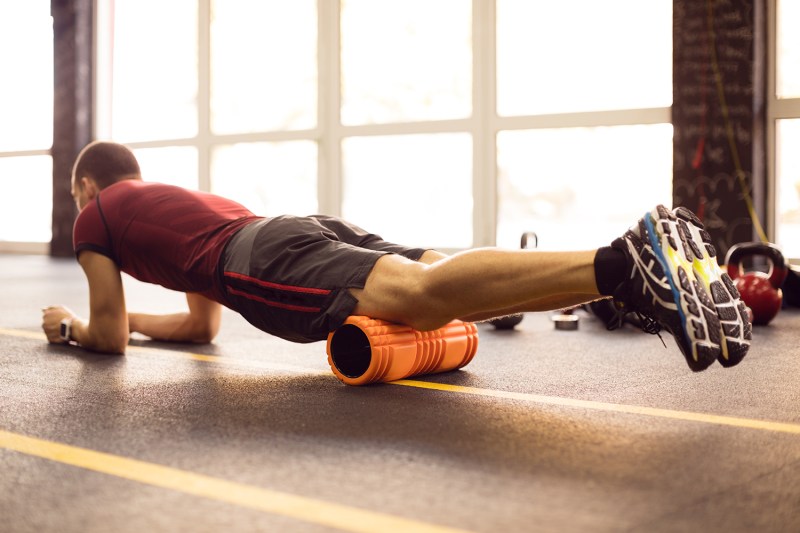Ever since school gym class, you probably remember being told to warm up before you exercise, especially when you first get to the gym or before cardio, like running. Some research has shown that warming up improves athletic performance and increases your body temperature, which could help prepare you for the workout ahead. According to the American Heart Association, stretching before and after exercise can decrease muscle pain and stiffness and help you feel better. Warming up widens your blood vessels, which helps improve the supply of oxygen to your muscles.
People try to warm up in different ways, and most don’t want to walk through the gym doors and immediately power through a deadlift. One of the more popular ways to warm up is by stretching and using a foam roller. If you’re like me, you might be wondering, what’s the best way to warm up? Is foam rolling and stretching better than other types of warm-ups? Recently, researchers conducted a study to find out.
The study

In a study published in the Journal of Sport and Health Science, researchers explored whether warm-ups like stretching and foam rolling were superior to other types of warm-ups for improving stiffness and flexibility before training. The researchers assessed 38 studies looking at how various activities affected flexibility and range of motion. These activities included:
- Cycling
- Walking
- Calisthenics
- Strength training
- Electrical stimulation
- Cryotherapy
- Heat package passive warm-ups
The results

The researchers concluded that no matter whether participants did stretching, foam rolling, or other activities, the effects of the warm-ups were the same. There was no difference in stiffness, range of motion outcomes, or rotational force. The researchers reported that exercise or movement wasn’t required to yield these benefits, and passive heating like hot baths also improved the range of motion.
In other words, the study showed that foam rolling, stretching, hot baths, or other warm-up activities enhance range of motion in the joints and deliver the same benefits.
How do foam rolling and stretching improve the range of motion?

Research revealed that stretching and foam rolling improve your range of motion and flexibility by improving the flow of synovial fluid. Synovial fluid is a thick fluid that helps lubricate and reduce friction between joints. Stretching and foam rolling enhance the flow of synovial fluid, which reduces stiffness and improves viscosity and your ability to contract muscles. Researchers have reported that these effects don’t just happen with stretching and foam rolling; they can happen with anything that increases muscle temperature, such as hot baths.
The takeaway

Most fitness professionals believe it’s a good idea to reduce stiffness, increase your heart rate and body temperature, and move your muscles before jumping into a workout. Stretching and foam rolling aren’t the only way to help the flow of synovial fluid, reduce muscle stiffness, and increase your body temperature. You can also try other options, such as light cardio, like a brisk walk or a five-minute warm-up on an exercise bike, a hot bath, or light strength training.
There’s no need to throw away your full-body stretching routine or your foam roller; the researchers maintain that stretching and foam rolling are valuable and beneficial pre-workout techniques, but they aren’t the only options in case you want to mix it up, or you’re short on time.




